HTML
--> --> -->The studies of nuclear reactions involving a light-particle projectile or ejectile are an important part of nuclear physics and highly useful for practical applications. Thus, we have already obtained the MOPs for the nucleon [1], deuteron [2], triton [3], and 3,4,6He [4-6]. In recent years, the weakly bound 7Li induced reactions has been a topic of great interest. Breakup, complete and incomplete fusion, and some other reaction mechanisms were addressed by experimental and theoretical nuclear physicists [7, 8]. The 7Li optical potential is required in the theoretical analyses.
To date, there are several 7Li optical potentials employed to analyze the experimental data. A semi-microscopic optical potential, whose real part is generated by the double folding model and nucleon-nucleon effective interaction and whose imaginary part is in the Woods-Saxon form, is given by Woods et al. [9] and used to analyze elastic scattering data for the 15N and 25Mg target. Deshmukh et al. [10] provided a Wood-Saxon form optical potential, while it can only be used for 116Sn. An optical potential provided by Camacho et al. [11] meets the dispersion relation of real and imaginary parts; however, it is only suitable for the 28Si target. Recently, Xu et al. [12] provided a new global phenomenological optical potential (GOP) based on the present experimental data, which is applicable to a more extensive incident energy and target region.
Since the measured 7Li scattering data are not sufficient to date, a 7Li MOP is obtained in the present work by folding the MOPs of its internal nucleons over their density distributions. The isospin-dependent nonrealistic nucleon MOP derived using the Green's function method in our previous work [1, 13-15] is adopted to be the MOP for the constituent nucleons. The shell model is applied to construct the internal wave function and generate nucleon density distributions. The 7Li elastic-scattering angular distributions and reaction cross-sections are calculated by the MOP and compared with the experimental data, and the results are calculated by the GOP [12].
This paper is organized as follows: the theoretical model and formulas of the MOP are presented in Sec. 2; the calculated results and analysis are provided in Sec. 3; the summary and conclusion are given in Sec. 4.
$ U(\vec R) = \int {{U_n}(\vec R + \vec r){\rho _n}(\vec r) + {U_p}(\vec R + \vec r){\rho _p}(\vec r){\rm d}\vec r},$  | (1) |
$ \int {{\rho _n}{\rm d}\vec r} = N;\;\;\int {{\rho _p}{\rm d}\vec r} = Z. $  | (2) |
The isospin-dependent nonrealistic nucleon MOP [1, 13-15] is adopted to be
The shell model is adopted to give an appropriate nucleon density in 7Li. Because a 1p-shell model space can efficiently describe its structure [18], and as we are here only concerned with the ground-state properties of 7Li, the harmonic oscillator potential is adopted to describe the mean interaction for the nucleons in 7Li, and the internal Hamiltonian of 7Li is expressed as
$ {H_{{}^7{\rm Li}}} = \sum\limits_{i = 1}^7 {{T_i}} + \sum\limits_{i = 1}^7 {\frac{1}{2}m{\omega ^2}r_i^2} , $  | (3) |
As the harmonic oscillator potential is used in the shell model, the ground-state wave function of 7Li is expressed as
$ {\Phi _{\rm g.s.}} = N {\cal{A}} \left\{ {({{\vec r}_6}\cdot{{\vec r}_7}){r_5}Y_1^{\mu}({\hat r}_5)\exp \left\{ - \frac{\beta }{2}\sum\limits_{i = 1}^7 {r_i^2} \right\} \zeta } \right\}, $  | (4) |
$ \sum\limits_{i = 1}^7 {{{\vec r}_i}} = 0, $  | (5) |
$ \begin{split} {{\vec r}_1} =& \frac{1}{2}{{\vec \xi }_1} + \frac{1}{3}{{\vec \xi }_2} + \frac{1}{4}{{\vec \xi }_3} + \frac{1}{3}{{\vec \xi }_5} + \frac{1}{7}{{\vec \xi }_6}, \\ {{\vec r}_2} =& - \frac{1}{2}{{\vec \xi }_1} + \frac{1}{3}{{\vec \xi }_2} + \frac{1}{4}{{\vec \xi }_3} + \frac{1}{3}{{\vec \xi }_5} + \frac{1}{7}{{\vec \xi }_6}, \\ {{\vec r}_3} = &- \frac{2}{3}{{\vec \xi }_2} + \frac{1}{4}{{\vec \xi }_3} + \frac{1}{3}{{\vec \xi }_5} + \frac{1}{7}{{\vec \xi }_6}, \\ {{\vec r}_4} =& - \frac{3}{4}{{\vec \xi }_3} + \frac{1}{3}{{\vec \xi }_5} + \frac{1}{7}{{\vec \xi }_6}, \\ {{\vec r}_5} =& - \frac{6}{7}{{\vec \xi }_6}, \quad {{\vec r}_6} = \frac{1}{2}{{\vec \xi }_4} - \frac{2}{3}{{\vec \xi }_5} + \frac{1}{7}{{\vec \xi }_6}, \\ {{\vec r}_7} = &- \frac{1}{2}{{\vec \xi }_4} - \frac{2}{3}{{\vec \xi }_5} + \frac{1}{7}{{\vec \xi }_6}. \end{split} $  | (6) |
$ \left\langle {r_{\rm rms}^2} \right\rangle = \left\langle {{\Phi _{\rm g.s.}}} \right|{\frac{1}{7}\sum\limits_{i = 1}^7 {r_i^2}}{\left| {{\Phi _{\rm g.s.}}} \right\rangle } , $  | (7) |
$ {\Phi _{\rm g.s.}} = N{\cal{A}}\left\{ {{\phi _1}(1234){\phi _2}(5){\phi _3}(67)\zeta } \right\}, $  | (8) |
$ \begin{split} &{\phi _1}(1234) = \exp \left\{ - \frac{\beta }{2}\sum\limits_{i = 1}^4 {r_i^2} \right\}, \\ &{\phi _2}(5) = {r_5}Y_1^m({{\hat r}_5})\exp \left\{ - \frac{\beta }{2}r_5^2\right\}, \\ & {\phi _3}(67) = ({{\vec r}_6}\cdot{{\vec r}_7})\exp \left\{ - \frac{\beta }{2}(r_6^2 + r_7^2)\right\}. \end{split} $  | (9) |
$ \left\langle {r_{\rm rms}^2} \right\rangle = \frac{{{A_0} - 2{A_1} - {A_2} + 2{A_3} + {A_4} - {A_5}}}{{{N_0} - 2{N_1} - {N_2} + 2{N_3} + {N_4} - {N_5}}}, $  | (10) |
$ \begin{split} {A_0} =& \left\langle {{\phi _1}(1234){\phi _2}(5){\phi _3}(67)} \right|{{\hat O}_A}{\left| {{\phi _1}(1234){\phi _2}(5){\phi _3}(67)} \right\rangle _\xi }, \\ {A_1} =& \left\langle {{\phi _1}(1234){\phi _2}(5){\phi _3}(67)} \right|{{\hat O}_A}{\left| {{\phi _1}(1264){\phi _2}(5){\phi _3}(37)} \right\rangle _\xi }, \\ {A_2} =& \left\langle {{\phi _1}(1234){\phi _2}(5){\phi _3}(67)} \right|{{\hat O}_A}{\left| {{\phi _1}(5234){\phi _2}(1){\phi _3}(67)} \right\rangle _\xi }, \\ {A_3} =& \left\langle {{\phi _1}(1234){\phi _2}(5){\phi _3}(67)} \right|{{\hat O}_A}{\left| {{\phi _1}(5264){\phi _2}(1){\phi _3}(37)} \right\rangle _\xi }, \\ {A_4} =& \left\langle {{\phi _1}(1234){\phi _2}(5){\phi _3}(67)} \right|{{\hat O}_A}{\left| {{\phi _1}(1267){\phi _2}(5){\phi _3}(34)} \right\rangle _\xi }, \\ {A_5} =& \left\langle {{\phi _1}(1234){\phi _2}(5){\phi _3}(67)} \right|{{\hat O}_A}{\left| {{\phi _1}(5267){\phi _2}(1){\phi _3}(34)} \right\rangle _\xi }, \\ {{\hat O}_A} = &\frac{1}{7}\sum\limits_{i = 1}^7 {r_i^2}.\\[-20pt] \end{split} $  | (11) |
$ \left\langle {r_{\rm rms}^2} \right\rangle = \frac{{12}}{{7\beta }} $  | (12) |
$ {\rho _{n(p)}}(\vec r) = \left\langle {{\Phi _{\rm g.s.}}} \right| {\sum\limits_{i = 1}^7 {\delta (\vec r - {{\vec r}_i}){\delta _{{\tau _{n(p)}},{\tau _i}}}} } {\left| {{\Phi _{\rm g.s.}}} \right\rangle }, $  | (13) |
$ {\rho _{n(p)}}(\vec r) = \left( {{a_{n(p)}} + {b_{n(p)}}{r^2}} \right)\exp \left( - \frac{7}{{6}}\beta {r^2}\right), $  | (14) |
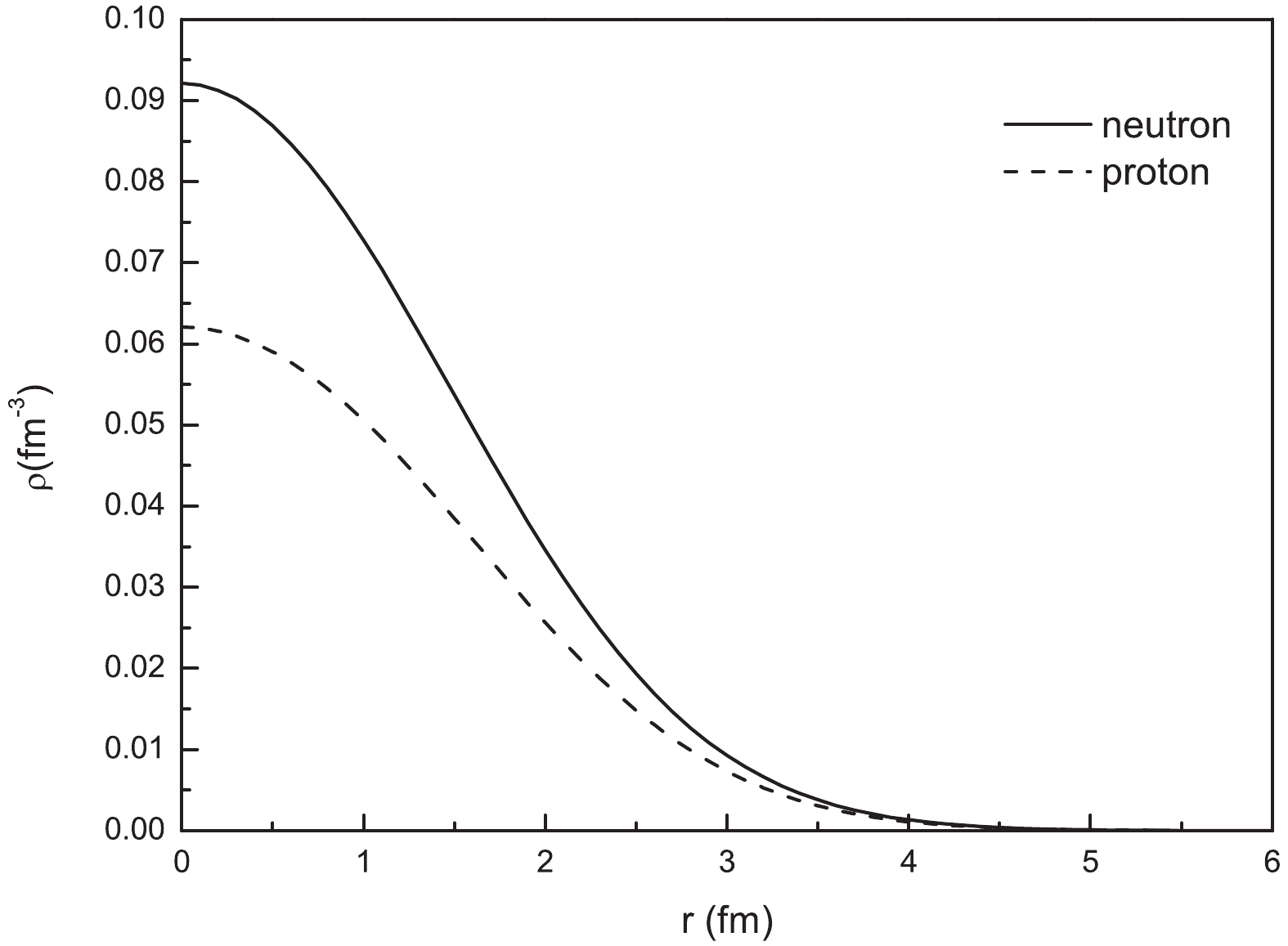 Figure1. Neutron (
Figure1. Neutron (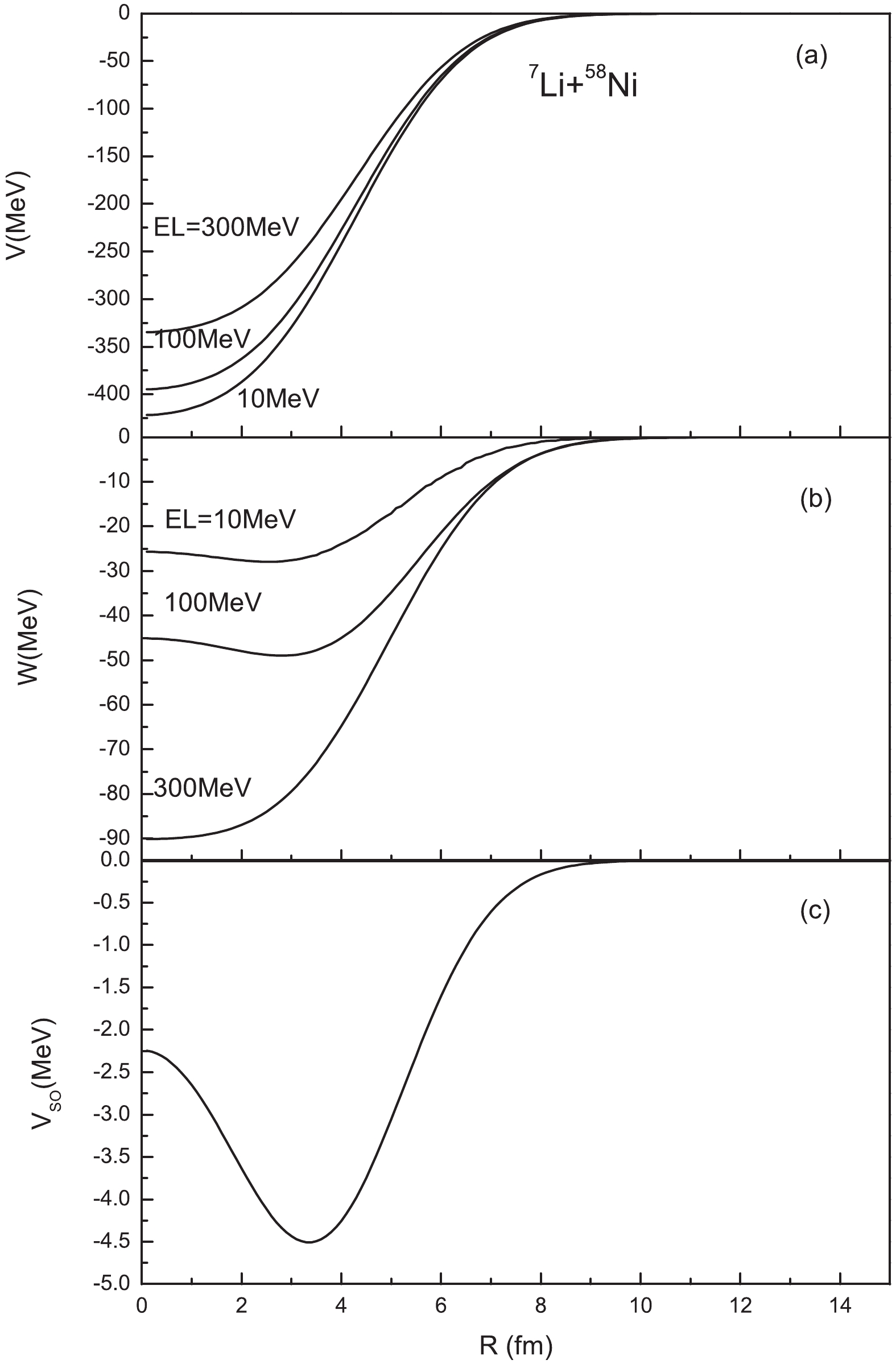 Figure2. MOP for 7Li+58Ni system (a) real part (
Figure2. MOP for 7Li+58Ni system (a) real part (The 7Li elastic-scattering angular distributions and reaction cross-sections are predicted using the MOP. Comparisons are made with experimental data and the results calculated by the GOP [12].
Figure 3 shows the elastic-scattering angular distribution for 27Al target at incident energies from 6.0 to 24.0 MeV. The result calculated by the MOP is in good agreement with experimental data [20, 21] except for the underestimation at EL = 11.0 MeV for large angles. In addition, the MOP result fits the experimental data slightly better than the result calculated by the GOP [12] below 14 MeV at larger angles.
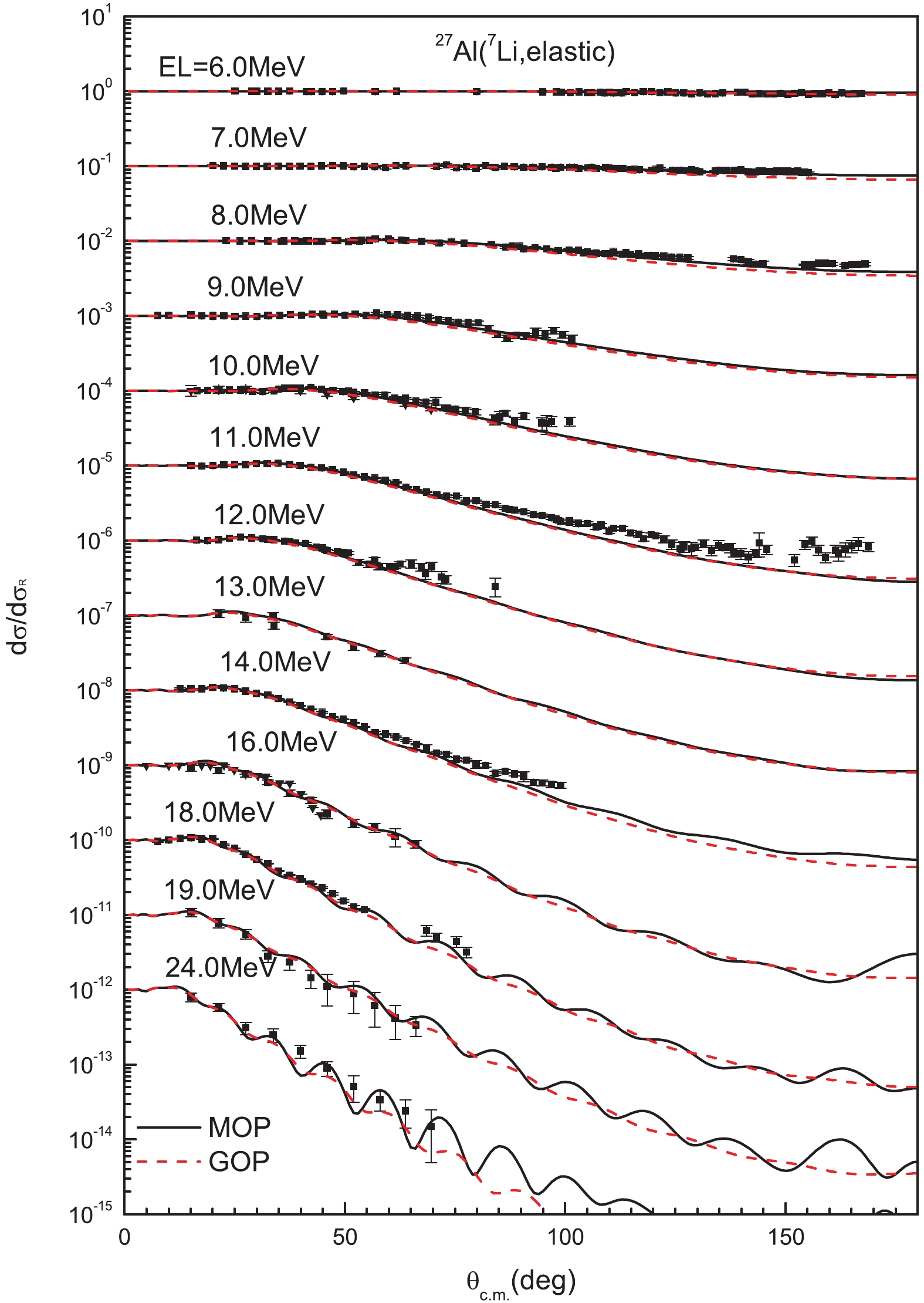 Figure3. (color online) Calculated elastic-scattering angular distributions in Rutherford ratio for 27Al compared with experimental data [20, 21]. Solid and dashed lines denote results calculated by MOP and the GOP [12], respectively. Graph results from top to bottom are multiplied 100, 10?1, 10?2, respectively.
Figure3. (color online) Calculated elastic-scattering angular distributions in Rutherford ratio for 27Al compared with experimental data [20, 21]. Solid and dashed lines denote results calculated by MOP and the GOP [12], respectively. Graph results from top to bottom are multiplied 100, 10?1, 10?2, respectively.The calculated elastic-scattering angular distribution for 58Ni target at incident energies from 14.22 MeV to 42.0 MeV is plotted in Fig. 4. The MOP efficiently reproduces the experimental data [22-24], except the slight underestimation above 70° at 16.25 MeV and 18.28 MeV, where the GOP performs slightly better.
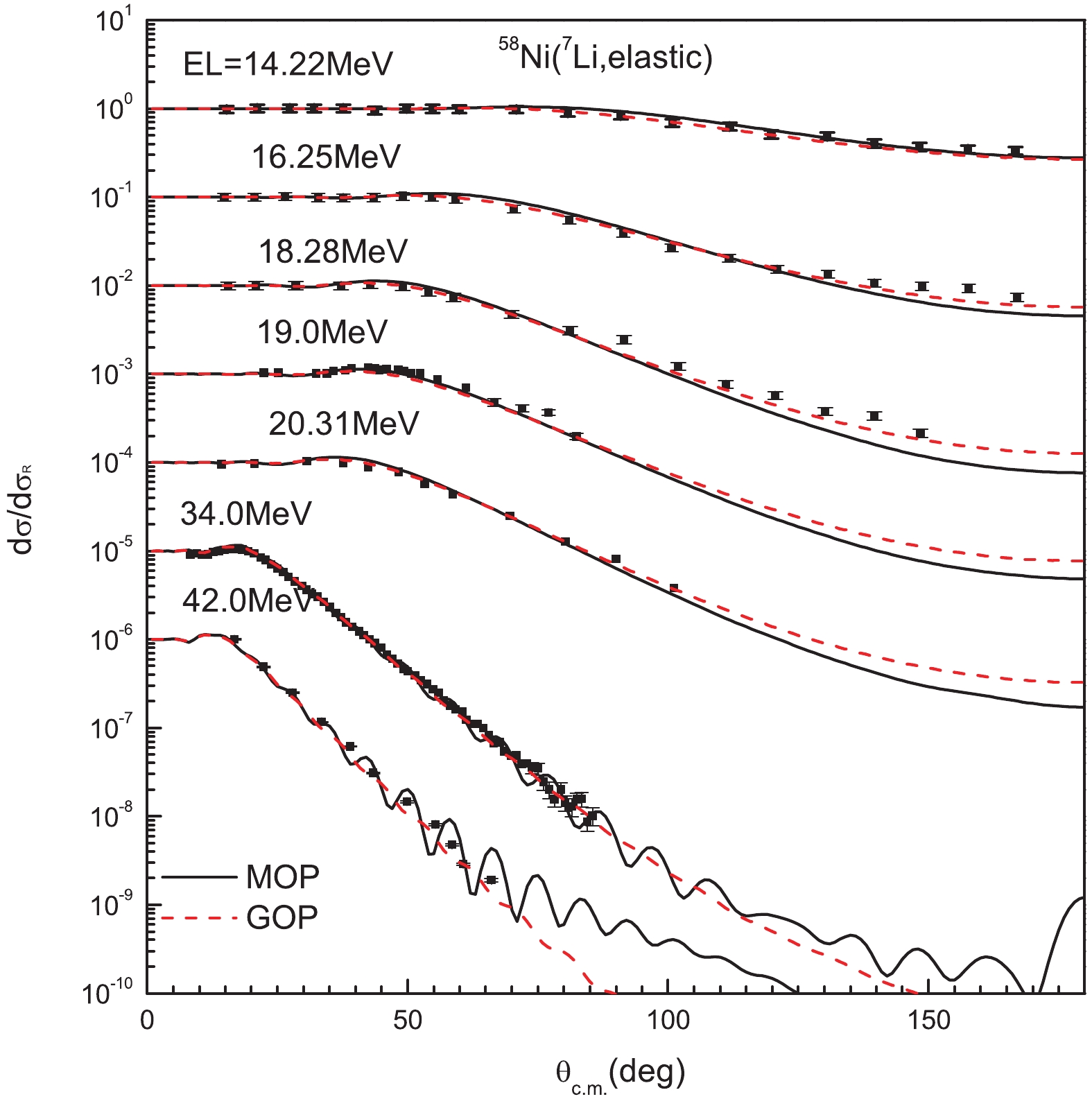 Figure4. (color online) Same as Fig. 3 for 58Ni. Experimental data are taken from Refs. [22-24]. Results from top to bottom are multiplied by 100, 10?1, 10?2, respectively.
Figure4. (color online) Same as Fig. 3 for 58Ni. Experimental data are taken from Refs. [22-24]. Results from top to bottom are multiplied by 100, 10?1, 10?2, respectively.The elastic-scattering angular distributions for 65Cu at incident energy 25.0 MeV and 89Y at incident energy 60.0 MeV are shown in Fig. 5. For 65Cu, the theoretical result from the MOP is lower than the measured values [25] above 70°. Reasonable agreement with the experimental data [26] is obtained for 89Y.
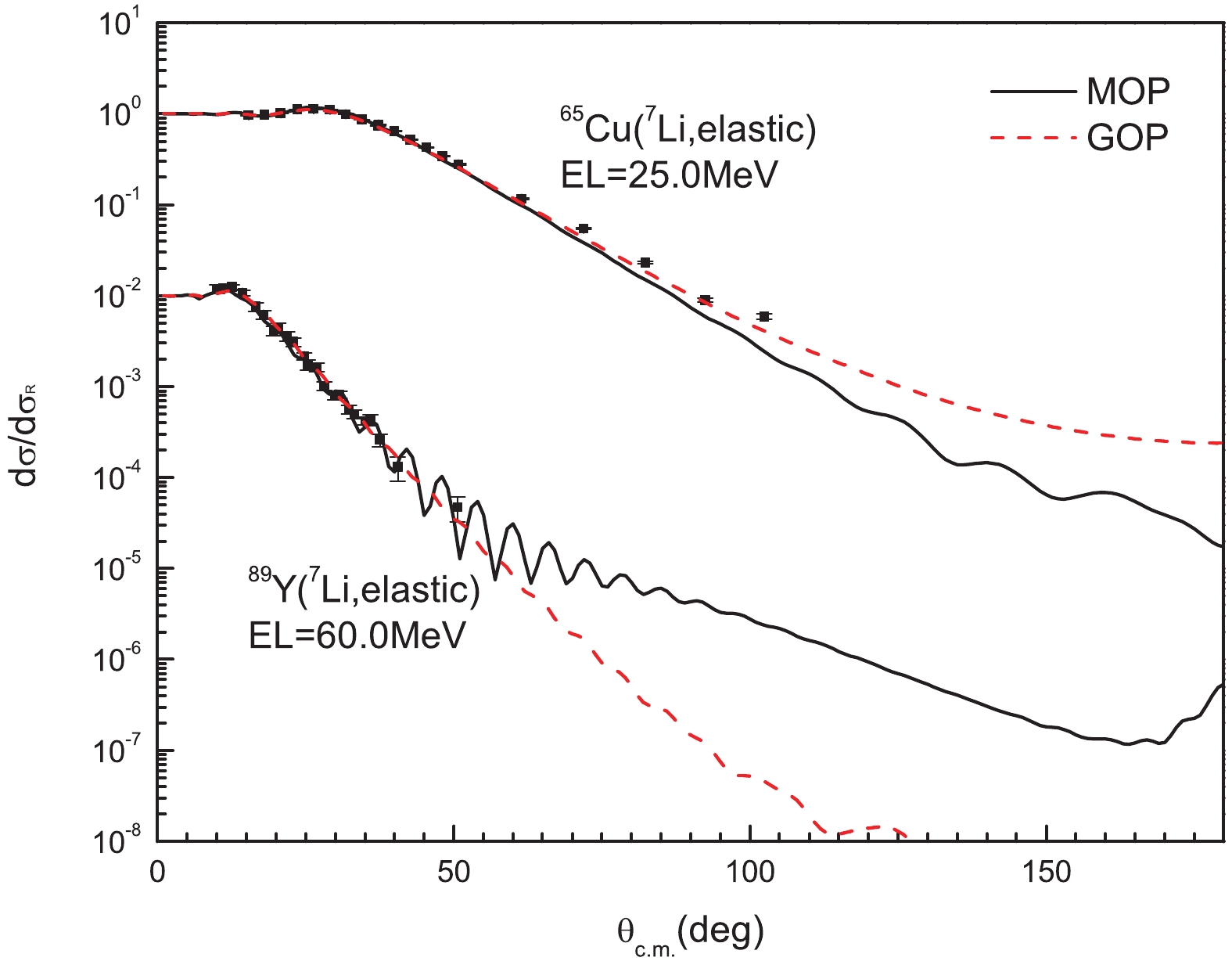 Figure5. (color online) Same as Fig. 3 for 65Cu and 89Y. Experimental data are taken from Refs. [25, 26]. The data for 89Y are multiplied by 10?2.
Figure5. (color online) Same as Fig. 3 for 65Cu and 89Y. Experimental data are taken from Refs. [25, 26]. The data for 89Y are multiplied by 10?2.Figure 6 shows the elastic-scattering angular distribution for the 116Sn target at incident energies from 18.0 MeV to 35.0 MeV. The calculated result from the MOP is in good agreement with experimental data [10] except at incident energies 22.0, 24.0, and 26.0 MeV at large angles. The MOP reproduces the measurements slightly better than the GOP at relatively lower energies.
 Figure6. (color online) Same as Fig. 3 for 116Sn. Experimental data are taken from Ref. [10]. Results from top to bottom are multiplied by 100, 10?1, 10?2, respectively.
Figure6. (color online) Same as Fig. 3 for 116Sn. Experimental data are taken from Ref. [10]. Results from top to bottom are multiplied by 100, 10?1, 10?2, respectively.The calculated elastic-scattering angular distribution for 138Ba targets is compared with experimental data [27, 28] in Fig. 7. When the scattering angles are less than 80°, good agreement with experimental data is obtained for the MOP. The GOP works better at larger angles.
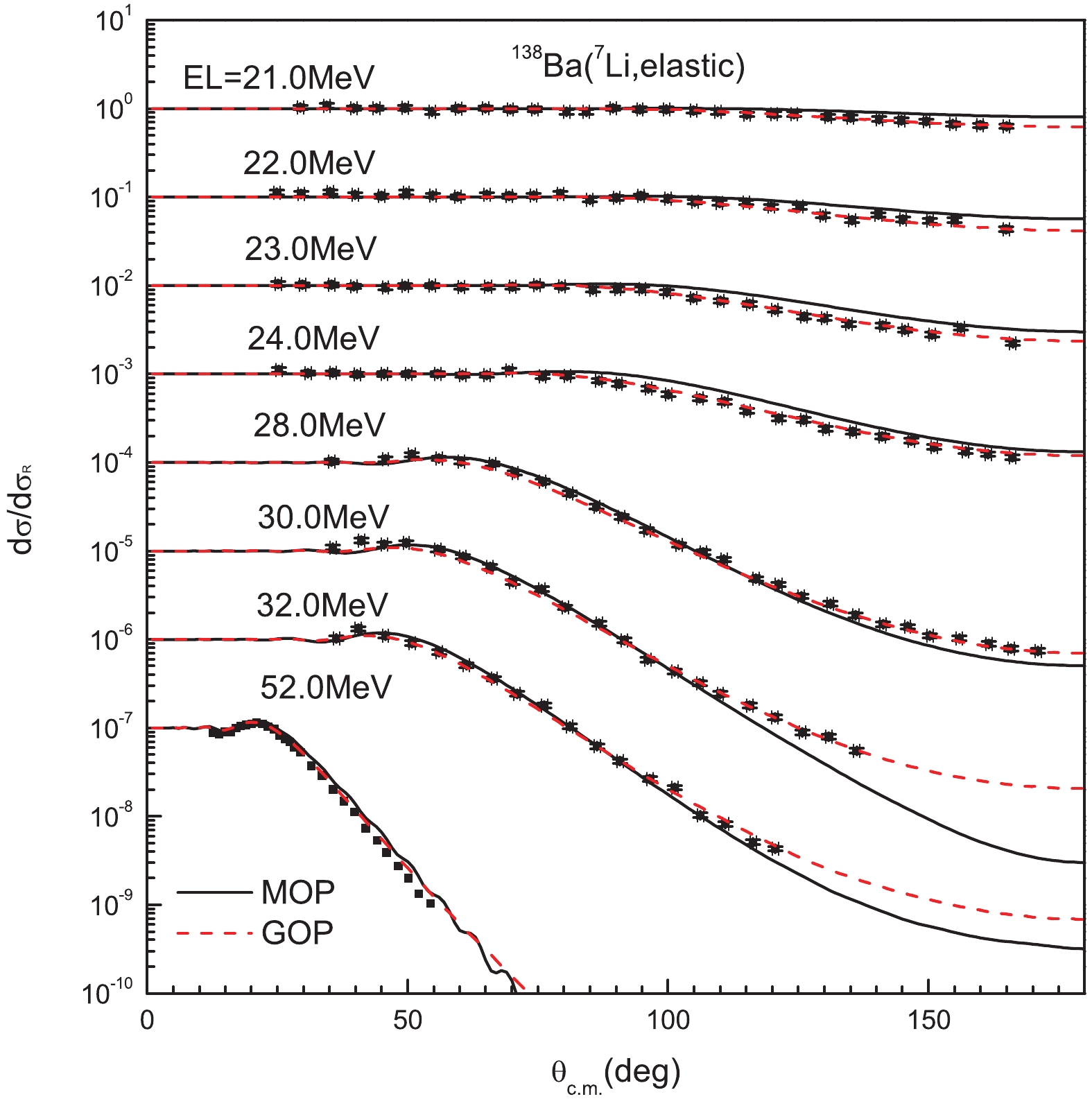 Figure7. (color online) Same as Fig. 3 for 138Ba. The experimental data are taken from Refs. [27, 28]. The results from top to bottom are multiplied respectively by 100, 10?1, 10?2.
Figure7. (color online) Same as Fig. 3 for 138Ba. The experimental data are taken from Refs. [27, 28]. The results from top to bottom are multiplied respectively by 100, 10?1, 10?2.In Fig. 8, the calculated elastic-scattering angular distribution for 208Pb is shown from 27.0 MeV to 52.0 MeV. The MOP result is in satisfying agreement with experimental data [29-32] and comparable to the GOP result in fitting the measured data, except for the case at 39 MeV above 70°.
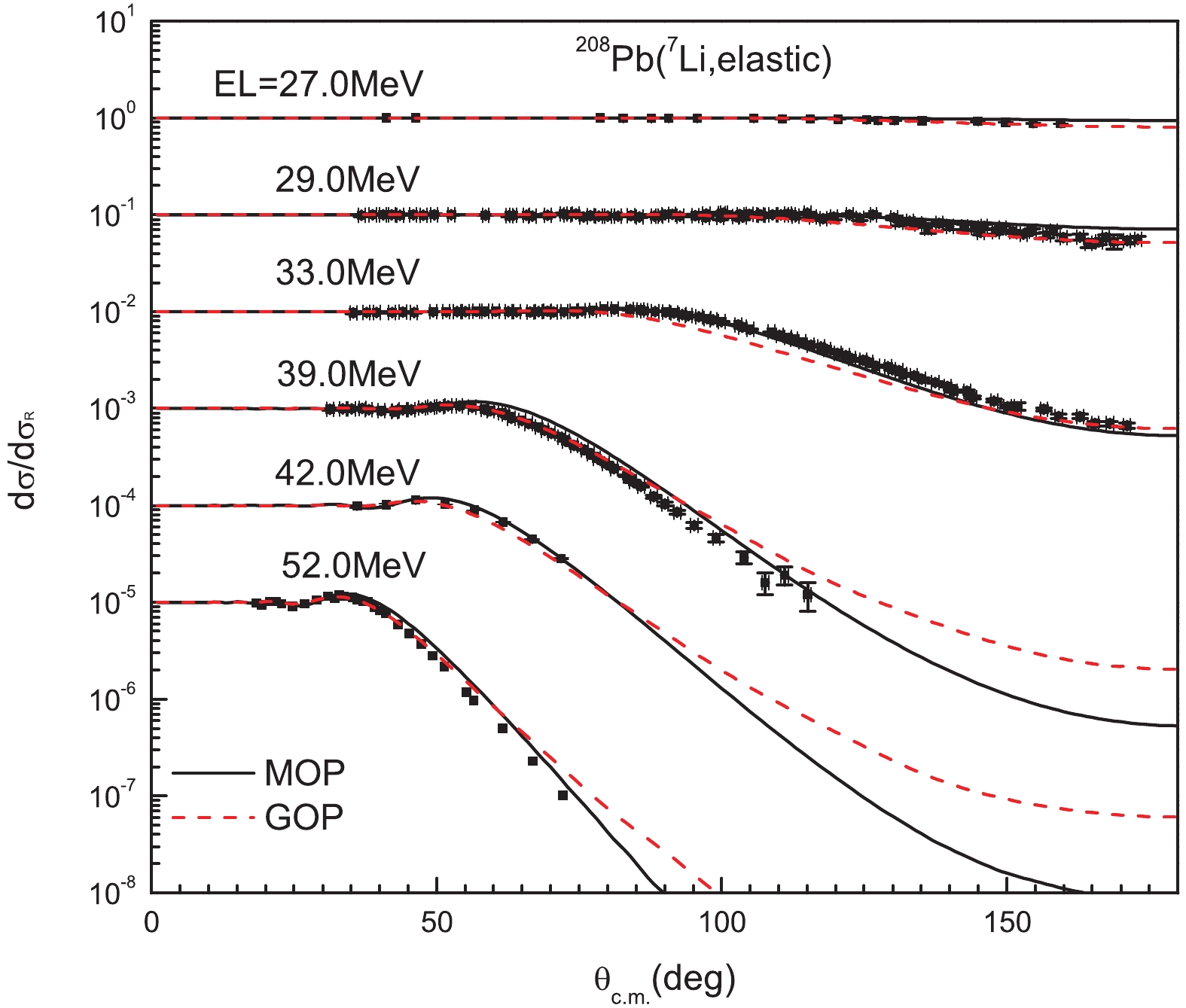 Figure8. (color online) Same as Fig. 3 for 208Pb. Experimental data are taken from Refs. [29-32]. Results from top to bottom are multiplied by 100, 10?1, 10?2, respectively
Figure8. (color online) Same as Fig. 3 for 208Pb. Experimental data are taken from Refs. [29-32]. Results from top to bottom are multiplied by 100, 10?1, 10?2, respectivelyFigure 9 shows the elastic-scattering angular distribution at some specific scattering angles for 27Al target. The calculated result by the MOP is slightly larger than that by the GOP at incident energies below 15 MeV and has a little better agreement with the measured values [33-36] when EL
 Figure9. (color online) Calculated elastic-scattering angular distributions in Rutherford ratio for 27Al at some scattering angles compared with experimental data [33-37]. Solid and dashed lines denote results calculated by MOP and GOP [12], respectively. The results from top to bottom are multiplied by 100, 10?1, 10?2, respectively.
Figure9. (color online) Calculated elastic-scattering angular distributions in Rutherford ratio for 27Al at some scattering angles compared with experimental data [33-37]. Solid and dashed lines denote results calculated by MOP and GOP [12], respectively. The results from top to bottom are multiplied by 100, 10?1, 10?2, respectively.The reaction cross-sections of 7Li-induced reactions on 13C, 27Al, 28Si, 64Zn, natCu, 116Sn, 138Ba, and 208Pb are also calculated and shown in Fig. 10 and Fig. 11. Figure 10 presents the results for 13C, 28Si, natCu and 208Pb. The theoretical result for 13C is within the measurement error range [38]. The MOP result for 28Si is in good agreement with experimental data [39-43] below 30 MeV; however, it becomes a little larger from 90 MeV to 200 MeV. The reaction cross-section for natCu is obtained by averaging the reaction cross-sections for 63Cu and 65Cu over the natural abundance. The MOP result is in good agreement with the experimental data [44] except for the energy point of 160 MeV. The MOP result for 208Pb reproduces the experimental data [30, 45] reasonably well below 70 MeV; however, it yields an underestimation at 300 MeV. Figure 11 shows that the MOP reproduces experimental data for 27Al [21, 46], 64Zn [47], 116Sn [10], and 138Ba [28] well. The MOP results are comparable to the GOP results in fitting the measured reaction cross-sections except for 208Pb.
 Figure10. (color online) Reaction cross-sections calculated by MOP compared with experimental data for 13C [38], 28Si [39-43], natCu [44] and 208Pb [30, 45] and results calculated by GOP [12]. Data are shifted upwards by adding 0, 2, 4 and 6 b, respectively. Solid and dashed lines denote results calculated by MOP and GOP, respectively.
Figure10. (color online) Reaction cross-sections calculated by MOP compared with experimental data for 13C [38], 28Si [39-43], natCu [44] and 208Pb [30, 45] and results calculated by GOP [12]. Data are shifted upwards by adding 0, 2, 4 and 6 b, respectively. Solid and dashed lines denote results calculated by MOP and GOP, respectively.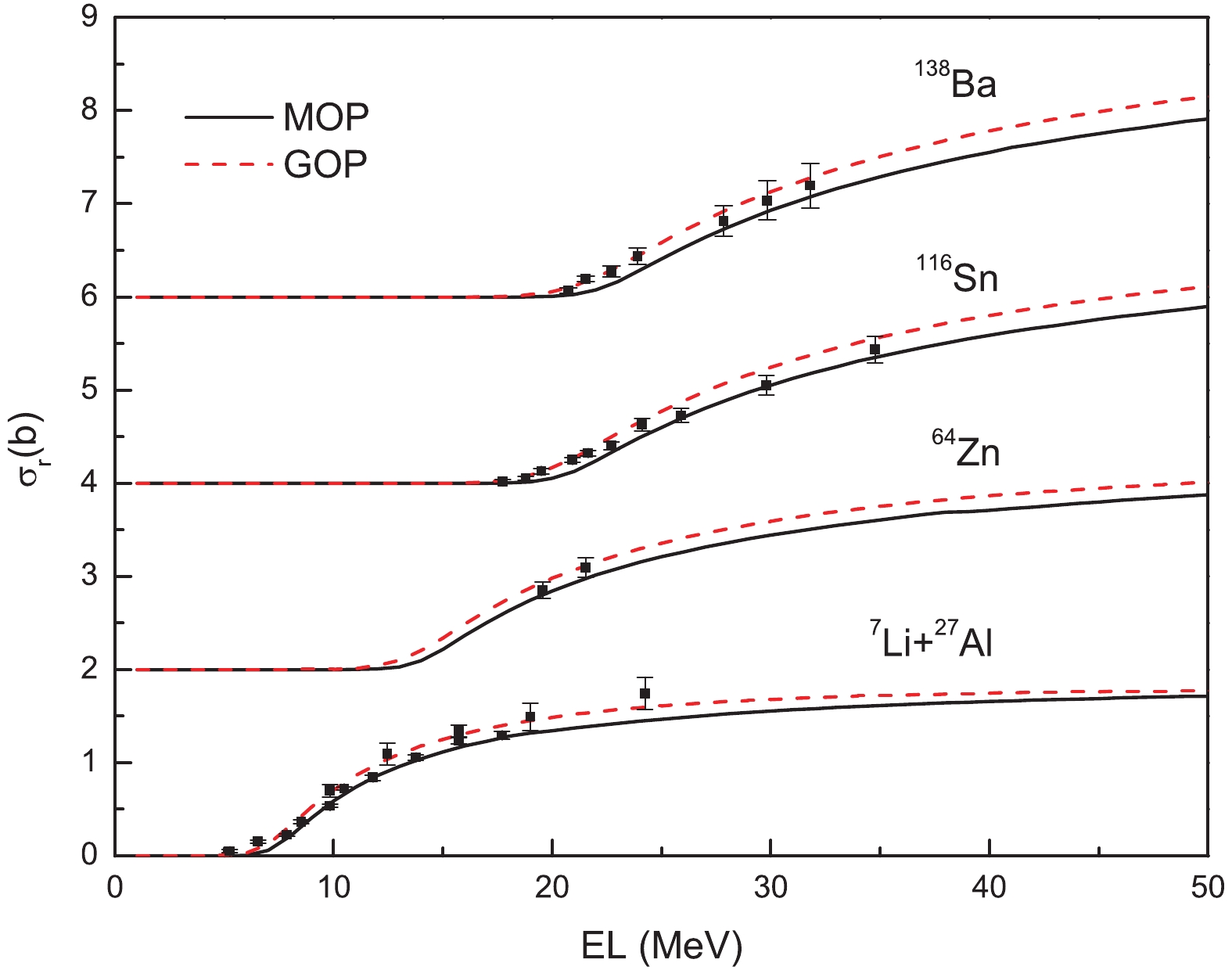 Figure11. (color online) Same as Fig. 10 for 27Al, 64Zn, 116Sn, and 138Ba. Experimental data are taken from Refs. [10, 21, 28, 46, 47].
Figure11. (color online) Same as Fig. 10 for 27Al, 64Zn, 116Sn, and 138Ba. Experimental data are taken from Refs. [10, 21, 28, 46, 47].The application of the MOP to the prediction of 7Li elastic scattering from light target nuclei was attempted. The elastic-scattering angular distribution for 16O is calculated and compared with experimental data [48-51], as shown in Fig. 12. The theoretical result from the MOP is only consistent with the magnitude of measured data in forward angles and gives an overestimation in relatively larger angles. Therefore, the MOP is not suitable for light nuclei. On the one hand, it may be interpreted that the Negele's nuclear density [52] adopted to calculate the nucleon MOP [1, 13-15] is not suitable for light nuclei. On the other hand, a light nucleus, such as 16O, has unique structure characteristics and reaction mechanisms [53, 54], which may also lead to discrepancy between the MOP results and measured values.
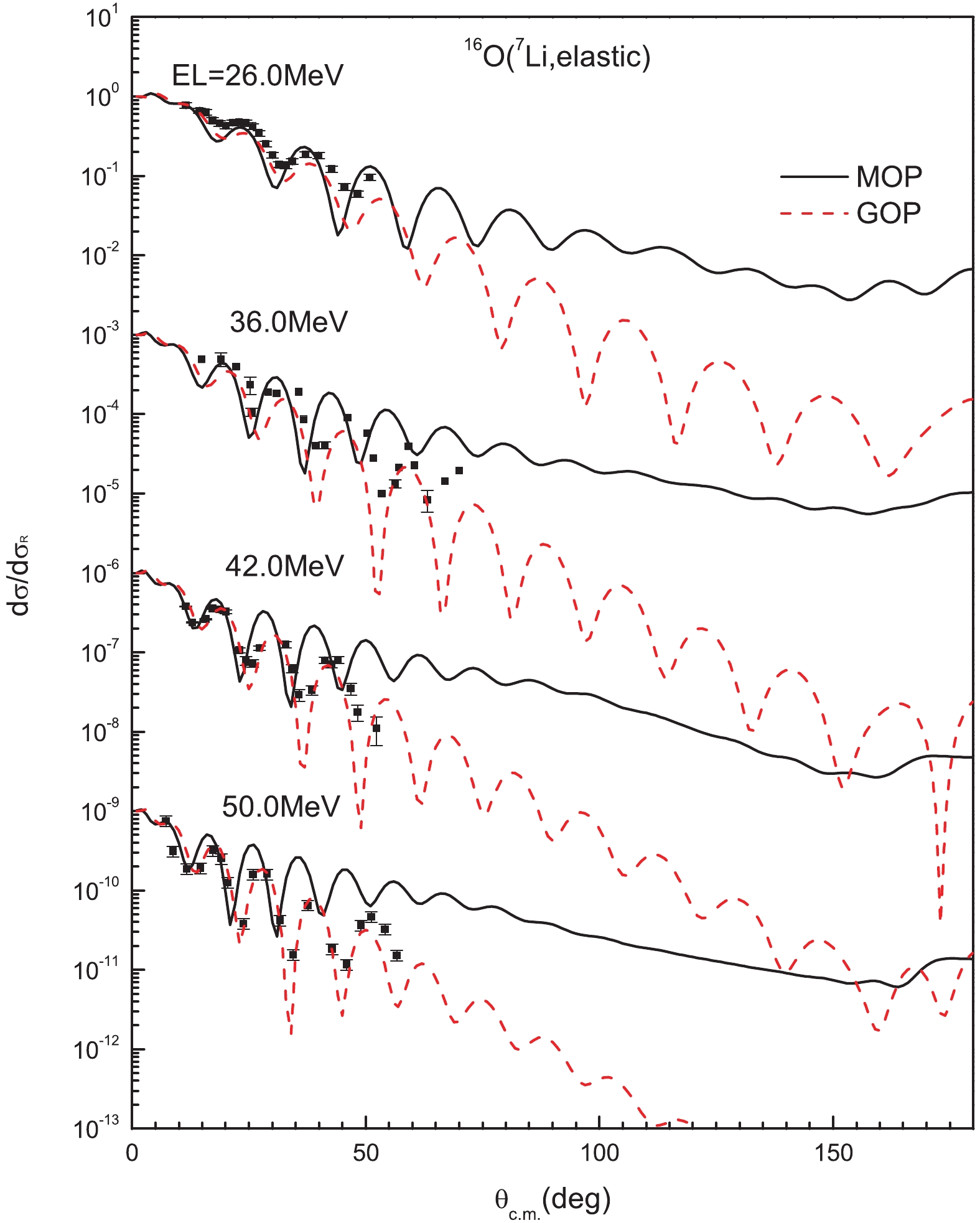 Figure12. (color online) Same as Fig. 3, for 16O. Experimental data are taken from Refs. [48-51]. Results from top to bottom are multiplied by 100, 10-3, 10-6, and 10-9, respectively.
Figure12. (color online) Same as Fig. 3, for 16O. Experimental data are taken from Refs. [48-51]. Results from top to bottom are multiplied by 100, 10-3, 10-6, and 10-9, respectively.Furthermore, some discrepancies between the calculated and measured elastic-scattering angular distributions appear at relatively larger angles, such as the case for 138Ba target at 28.0 MeV. To investigate how to improve the MOP to provide a better global agreement with experimental data, the notch perturbation method [55, 56] is employed to analyze the sensitivity of the calculated elastic scattering angular distributions to the optical potential. The perturbation is performed by setting
$ \chi _0^2 = \frac{1}{N _{\theta}}\sum\limits_{i = 1}^N {{{\left[ {\frac{{{\sigma ^{T} _0}({\theta _i}) - {\sigma ^{E}}({\theta _i})}}{{\Delta {\sigma ^{E}}({\theta _i})}}} \right]}^2}}, $  | (15) |
Figure 13 shows the MOP for the 7Li+138Ba system at EL = 28.0 MeV and
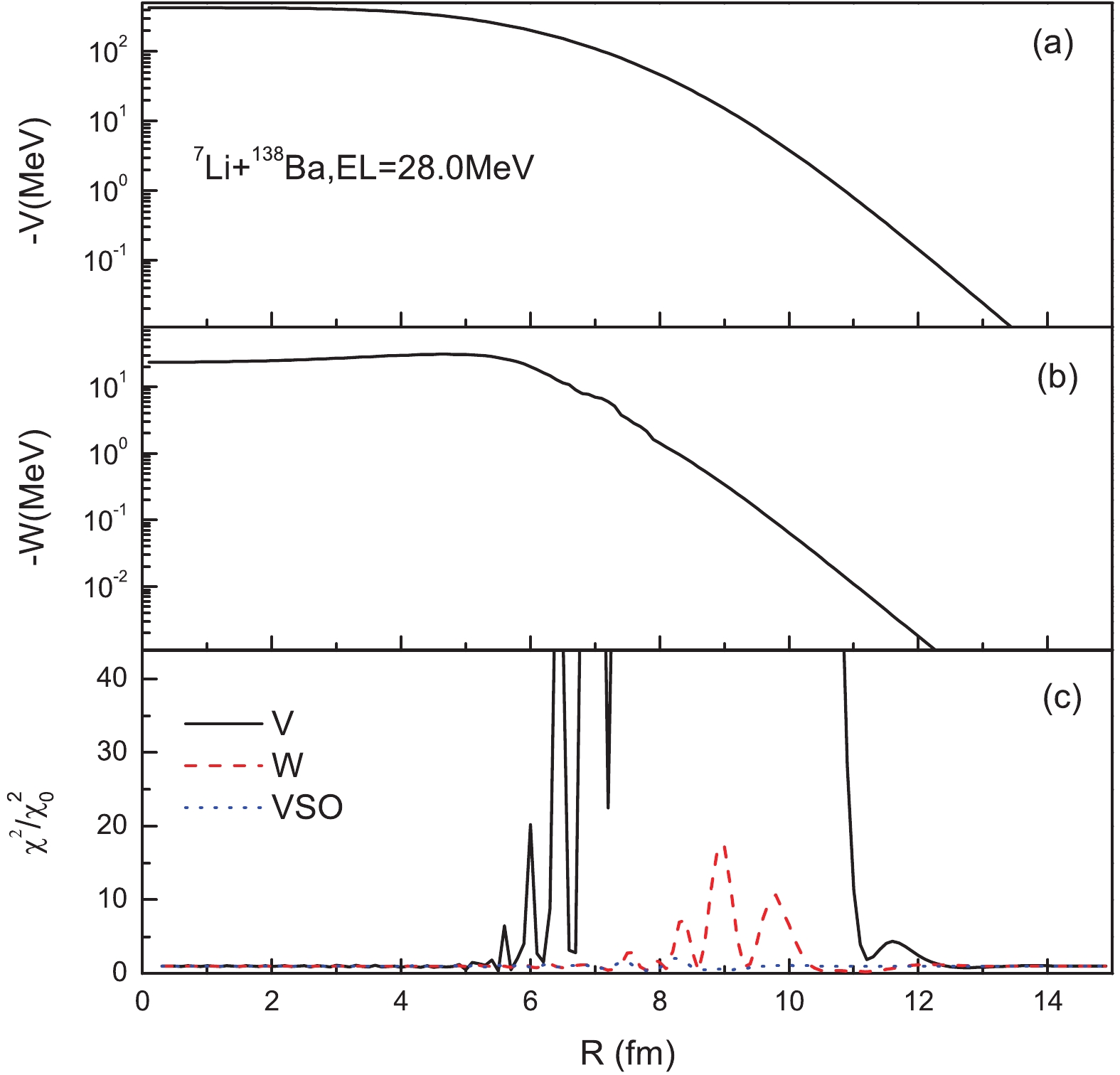 Figure13. (color online) Notch perturbation analysis of MOP for 7Li+138Ba reaction at EL = 28.0 MeV, (a)
Figure13. (color online) Notch perturbation analysis of MOP for 7Li+138Ba reaction at EL = 28.0 MeV, (a) We adjust the
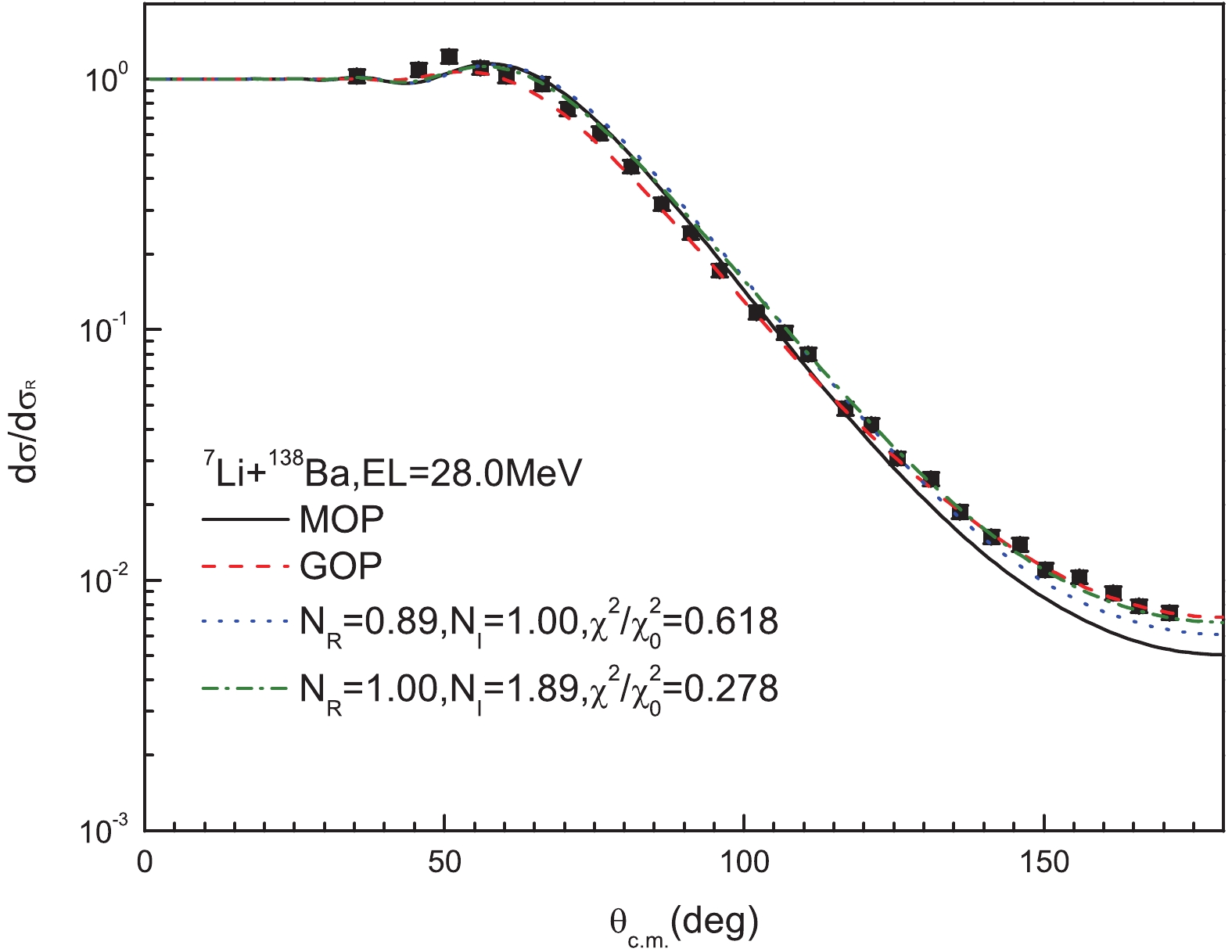 Figure14. (color online) Calculated elastic-scattering angular distributions in Rutherford ratio for 138Ba at EL = 28.0 MeV. Solid, dashed, dotted, and dash-dotted lines denote results calculated by MOP, GOP [12], MOP with adjusted
Figure14. (color online) Calculated elastic-scattering angular distributions in Rutherford ratio for 138Ba at EL = 28.0 MeV. Solid, dashed, dotted, and dash-dotted lines denote results calculated by MOP, GOP [12], MOP with adjusted 